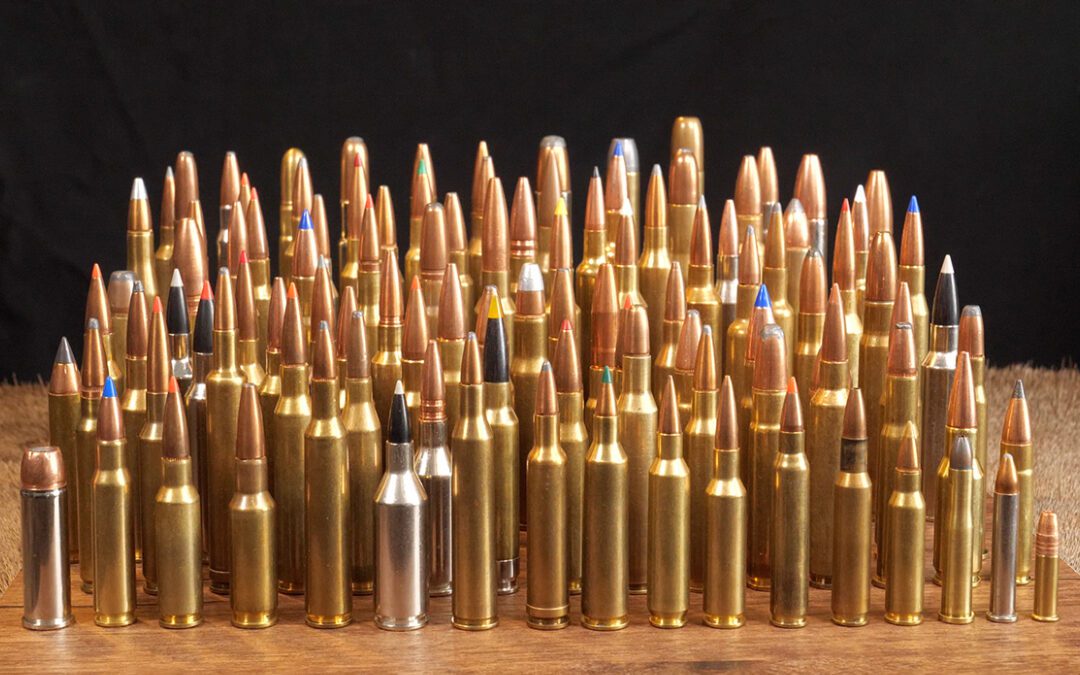The panoply of centerfire rifle cartridges extant in 2023 isn’t just extensive; it’s redundant. Navigating it to select the ideal for your needs, desires and styles of hunting can be overwhelming.
We have at least 25 varieties of 30 caliber cartridges, 15 7mms, 10 338s, 15 6.5mms…. Many are stepping on one another’s toes. How do we choose?
A new hunter’s usual approach is to phone a friend. What does Grandma, Dad, or Cousin Eddie shoot? What does your favorite, famous hunting “personality” recommend? More sophisticated shooters might look at some ballistic numbers and base their selection on muzzle velocity or top-end bullet weight or perceived punch. Many just settle for a round with lots of buzz, something popular. Creedmoor, anyone?
Each of these shopping methods usually work for a simple reason: most common centerfire rifle cartridges do the job. When used judiciously with the right bullets and proper shot placement, they terminate game. This is why some experienced hunters swear the 270 Winchester is the top option for whitetails while others insist it’s 45-70 Govt. and others the 220 Swift.
Given this extreme breadth of “best” hunting cartridges, we might want to lay out a more scientific system for assessing and choosing. Here are some things to consider when choosing your next rifle round:
1. Identify Anticipated Quarry
Will you be hunting 10-pound dik-dik or 1,800-pound buffalo? You can always take small animals with big bullets, but not so easily the other way ’round. Err on the side of bigger, but balance that with additional considerations. And don’t assume you’ll need to shoot everything with one rifle/cartridge. It can be done, but multiple tools make more sense.
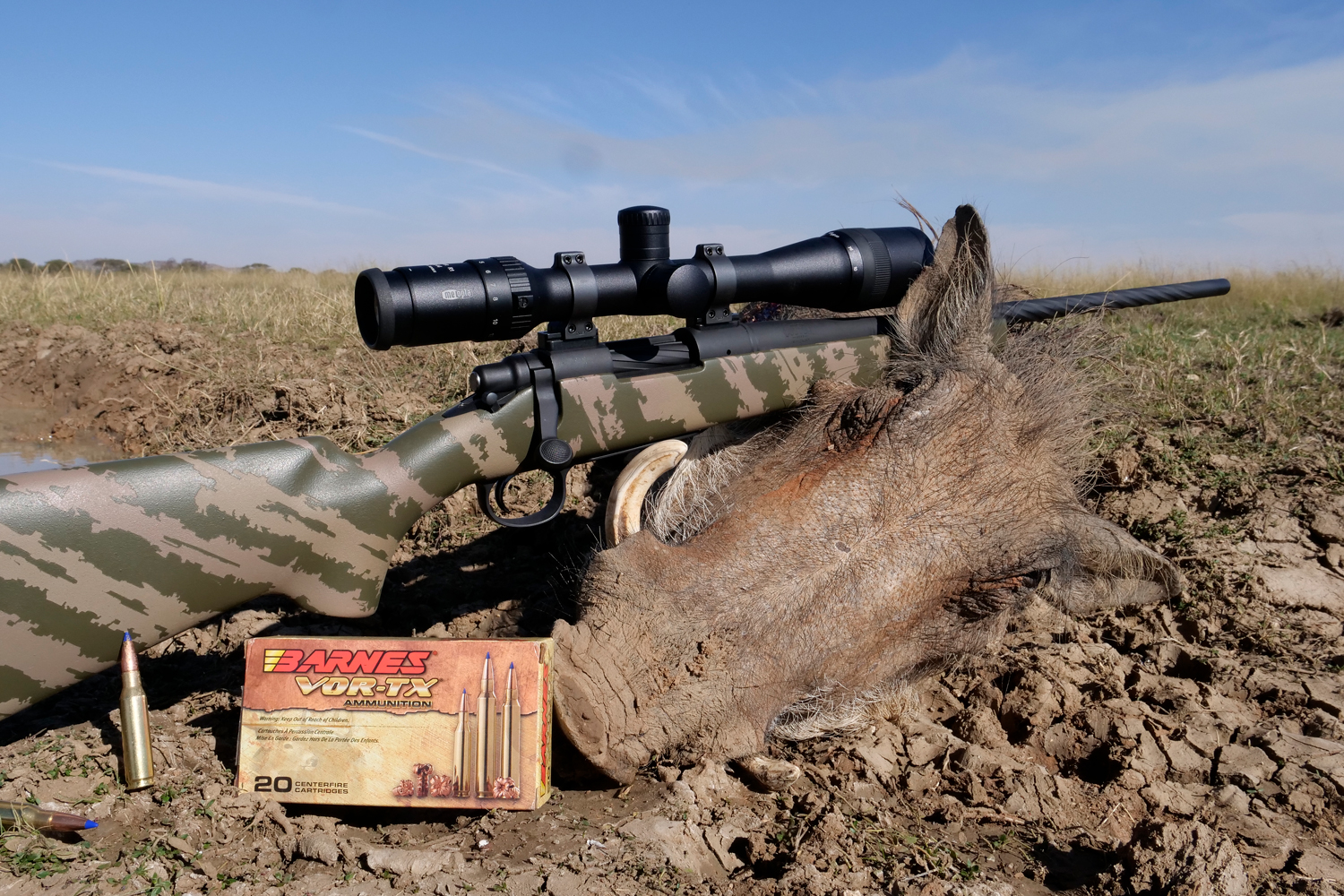
A synthetic stock rifle chambered for a prosaic round such as the 308 Win. might not stir nostalgia and romance, but it’ll certainly bring home the bacon.
2. Anticipate Habitat and Shooting Distance
Regardless of animal size, the terrain and habitat in which it lives play a big part in cartridge/bullet effectiveness. The 30-30 Winchester might be perfect for whitetails at 100 yards in woodlands, sorely lacking at 400 yards on the plains of Montana. Err on the side of higher muzzle velocity. It not only throws bullets farther and flatter but minimizes wind deflection at the same time.
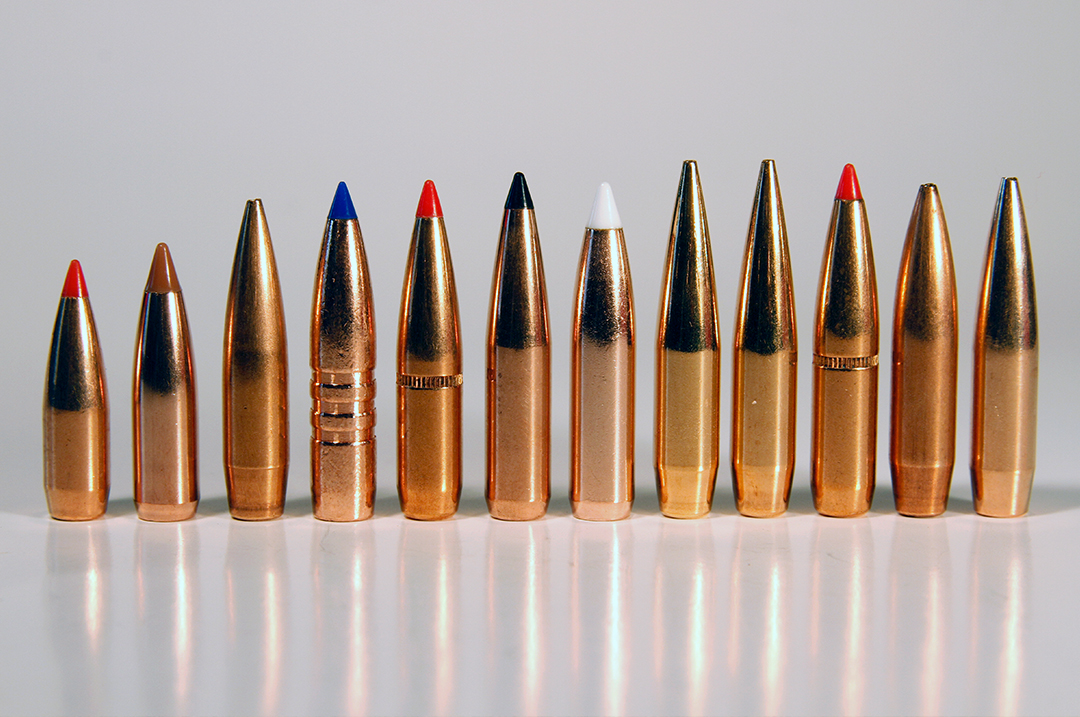
Bullet length and mass are influenced by the game you wish to shoot and at what distance. The heavier, longer, modern, efficient, high B.C. .264-inch diameter bullets in this collection might require a modern cartridge with a fast twist barrel to stabilize.
3. Balance Muzzle, Energy and Recoil
Hunters can’t help but carry the hammer of Thor. Use more than enough gun. Thump them so hard that they have no clue they’re already dead. Two things spoil this: The bigger hammer approach doesn’t always, or even usually, work on the game. Bullet placement always counts for more than pure energy. Ditto bullet construction.
The rifle kicks at both ends. Enduring massive recoil to launch 5,000 to 8,000 foot-pounds of energy can easily compromise shot placement. You flinch, you lose. The right controlled expansion projectile carrying 3,000 foot-pounds of energy can kill as quickly and effectively as the wrong projectile carrying twice that much. Rank shot placement over energy every time.
4. Is Your Cartridge Legal?
A Lazzeroni 8.59mm Titan (338-caliber) might drive a 285-grain bullet fast enough to kill the largest bull that ever waded a swamp in Africa, but if local regulations require a 375-caliber minimum… A 308 Winchester might be versatile and effective on everything from dik-dik to eland, but if it’s banned as a “military cartridge” in the country you hope to hunt… And the 7mm Remington Magnum might be optimal for elk, but if your outfitter enforces a hard and fast rule against its use….
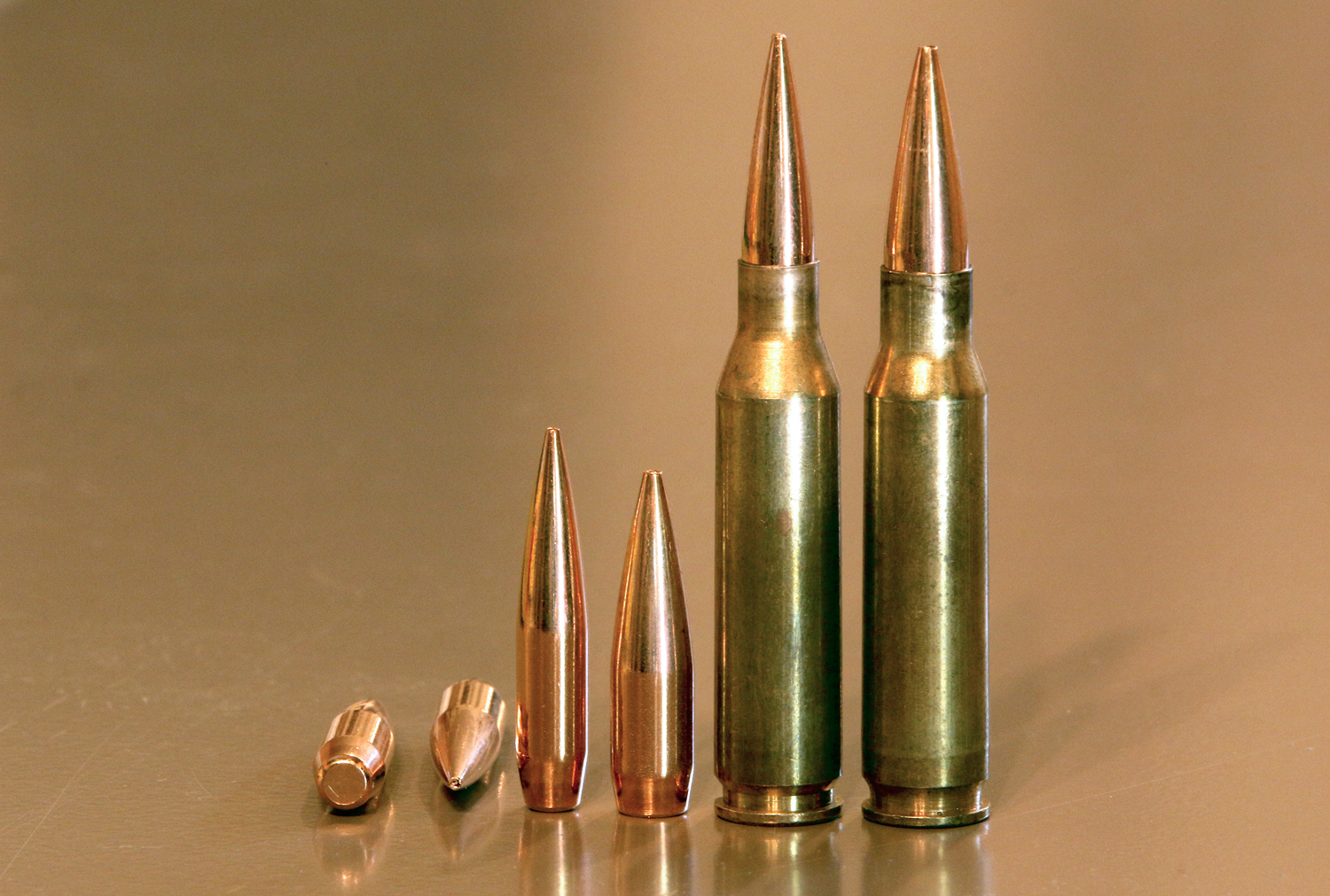
The 308 Winchester might be the most versatile, ubiquitous, inexpensive round for which to find rifles and ammo, but if you plan to hunt countries in which it is banned as a military round, you’d be better off with its 26-caliber offspring, the 260 Remington.
5. Ammo Availability and Cost
You can’t help but love the ballistic performance of a 27 Nosler, but at retail prices somewhere north of $100 a box, are you going to fire 100 a week in training for that Dall sheep hunt? And will your local retailer, let alone a small shop in Talkeetna, stock 27 Nosler? Handloaders can largely ameliorate the expense issue, but availability might become an issue. This explains the huge popularity advantage the 270 Winchester has over the 270 Weatherby Magnum, the 308 Winchester has over the 30 TC and 300 Ruger Compact Magnum.
6. Size and Carry Weight
How much mass do you want to haul? How long of a barrel do you want to duck through the woods? A whitetail hunter strolling 100 yards to a box blind won’t notice much difference between a 10-pound rifle and a six pounder, a 20-inch barrel or a 26-inch. But the still-hunter jumping bucks in brush tangles sure would. And an elk hunter humping the hills of Montana sure will. But mass and overall rifle length are more than just an energy drain. When that mule deer buck bursts unexpectedly from a sage thicket and bounces toward the draw 20 yards ahead, a six-pound rifle and 22-inch barrel will swing into your shoulder pocket and onto that buck’s neck much faster than a 10-pound rifle with a 26-inch barrel. Select a magnum cartridge that needs a heavy rifle and long barrel to offset recoil and maximize muzzle velocity and you could be handicapping your ability to use it. Settle for a mild shooting round and short barrel and you could fall short on an open country, long range pronghorn hunt. (Did I mention that you don’t need to hunt everything with the same rifle?)
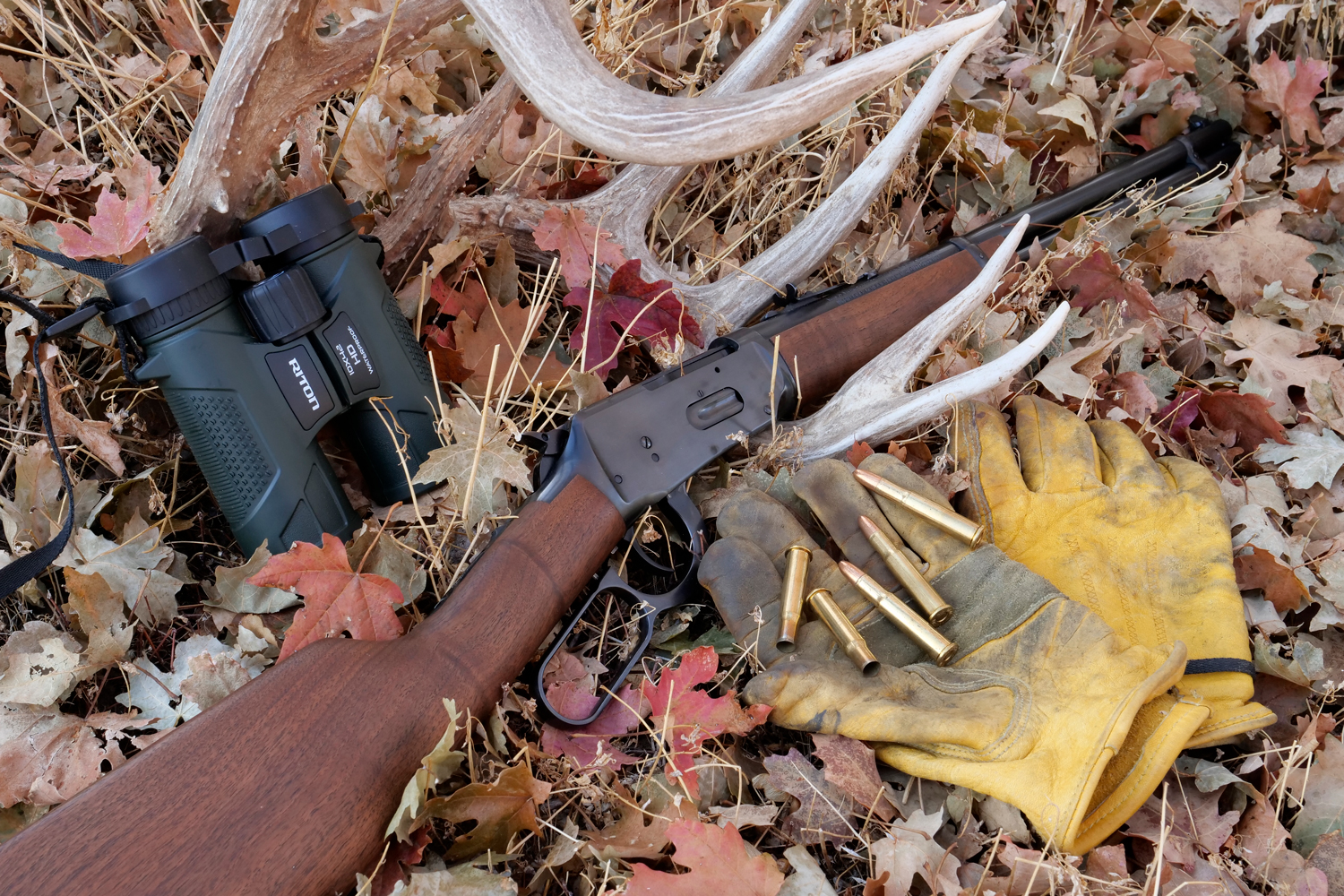
The old standby lever-action 30-30 remains a fine choice for woods hunting, the short, quick-handling rifle ideal for snap shots in heavy cover, the 30-30 bullets flying flat enough for easy hits and clean kills to 200 yards. It won’t be as effective on the windy pronghorn plains.
7. Wind Deflection
Anyone expecting to shoot 200 yards or farther in the 20- to 30-mph winds that plague much of the West should understand and appreciate wind defying bullets. We’ve erroneously called these “wind bucking” bullets for decades. But they don’t buck the wind. They slip it. The slimmer, sleeker and faster the bullet, the less it drags and the less it is diverted by crosswinds. This, not reduced drop, is the biggest advantage of today’s highest B.C. (ballistic coefficient) bullets. And to shoot those bullets you need not just a “fast” bullet, but a rifle with fast rifling to stabilize it. This is why it might be smarter to buy a 6.5 PRC or 6.5 RPM instead of a 264 Win. Mag., a 7mm PRC instead of a 7mm Remington Magnum.
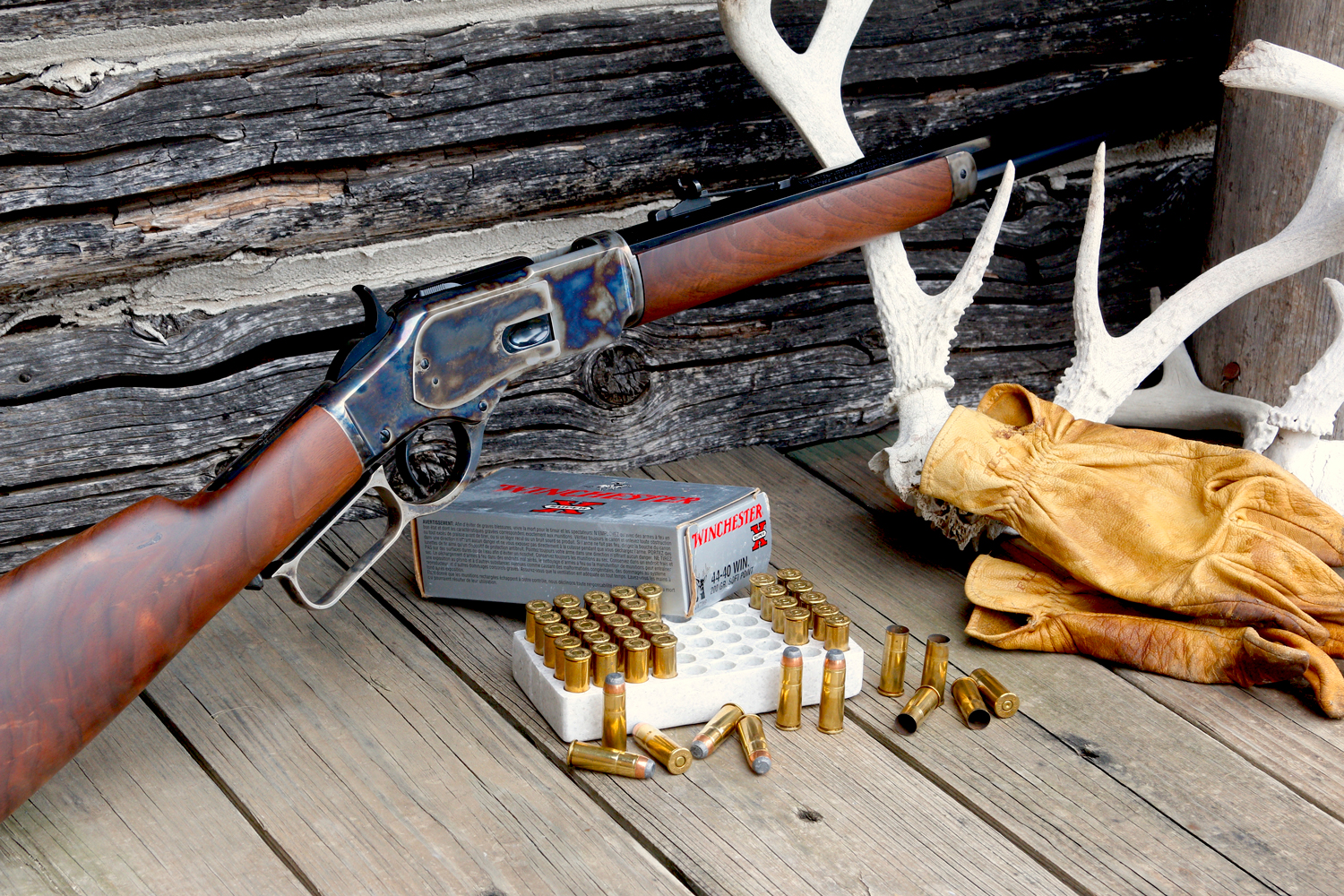
The 44-40 cartridge of 1873 is slow and weak compared to modern rounds, but when paired with a Winchester Model ’73 rifle, it can make for a more challenging, satisfying deer hunt. Romance and tradition are a significant part of some hunts.
8. Nostalgia and Romance
Pragmatism be damned, sometimes you just want what tugs at your sense of romance and adventure. Carrying a 275 Rigby in Africa could add enough more magic to your hunt to easily offset the ballistic superiority of a 7mm Remington Ultra Magnum. Leveling a 270 Winchester across the Brooks Range at that 40-inch ram could mean much more than the additional reach of a 270 Winchester Short Magnum. The mere feeling of bolting home a slippery 300 H&H Magnum can compensate for extra 250 fps of a 30-378 Weatherby Magnum.

9. It’s All Good
Selecting your “best” hunting cartridge is rather like selecting a mate. There are many things to consider, pragmatic as well as esthetic and romantic. Divorce courts and used gun racks prove we choose poorly from time to time. But the good news is we’re allowed second chances. And more. Some of us make a first choice that matches us to a partner we hunt with a lifetime. Some of us trade up or down, again and again. If you want to avoid wrong choices and frequent trades, do your homework.

